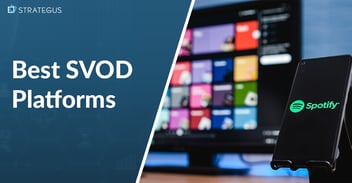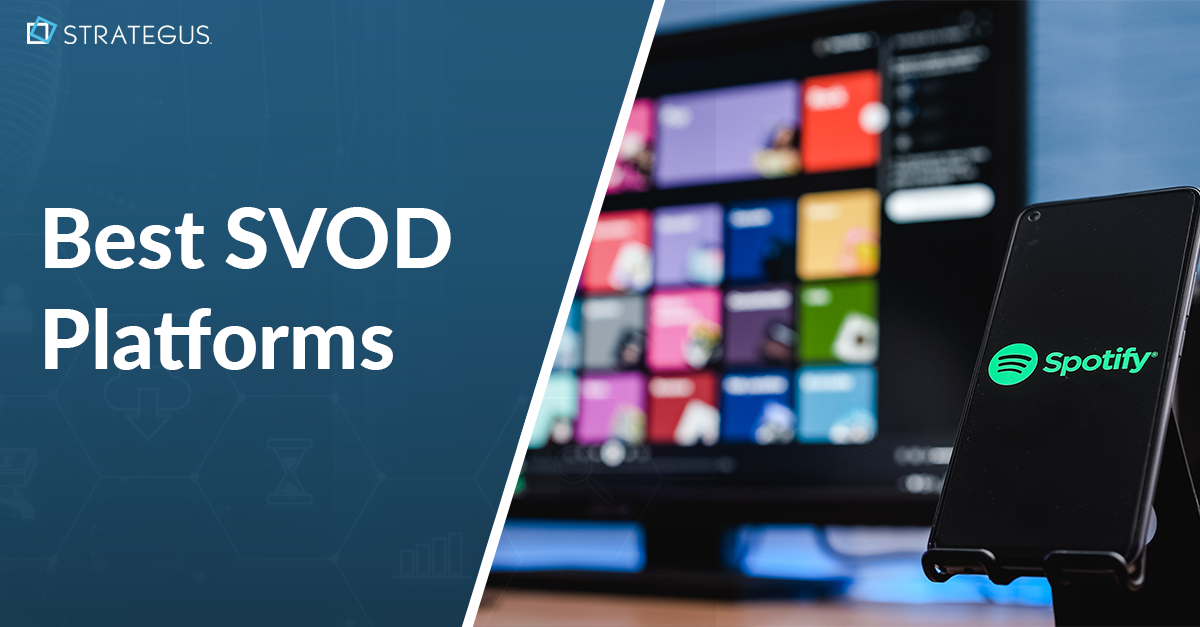- Home
- Strategus Blog
- 5 OTT Advertising Strategies in the New Normal
5 OTT Advertising Strategies in the New Normal
 Andy Dixon
Andy Dixon
4 minutes read

How to Emerge from a Shutdown with New Targeting Mentalities
By Joel Cox, Strategus Co-Founder, EVP Strategy & Innovation
When I saw this prediction in PC Magazine: that if pro football delays its season, cable subscriptions may plunge another third on top of already staggering cord-cutting – I started to think that we’re not just at a tipping point, but perhaps at the point of no return with cable’s fading dominance. Targeting needs to keep pace with this evolution, and based on what we’re seeing in our current campaigns, here are five strategic imperatives to keep in mind:
1 – DIGITAL STREAMING IS THE FUTURE: RIGHT NOW
The last firewalls protecting broadcast and cable TV – news and sports – were already degrading quickly before the pandemic. In 2018, over 90 million U.S. households subscribed to cable/satellite TV. This number is expected to drop as much as 10 million this year. Now, with no sports, and cable news becoming almost unbearable to watch, we may finally have reached the tipping point where digital streaming will start to overtake cable and satellite viewership share.
This means that advertisers simply cannot afford to ignore over-the-top digital content. With the increased variety of programming that can now be downloaded on all manner of devices large and small, advertisers should include programmatic OTT/CTV strategies in all future campaigns. With this, we all need to keep up with the new targeting techniques that address the changing viewer behavior that’s happening right now, all around the world.
2 – CONTENT TARGETING: DIFFERENT, NOT DEAD
Buying media according to the general audience you think might be watching a regularly scheduled program (content-targeting) may still make sense in many cases (think: Super Bowl). But with today’s data-driven targeting capabilities, it’s about reaching your audience with messages relevant to them as individuals, not merely demographic statistical profiles. This is especially true when buying into the vast and variable ad inventory across the open internet.
With COVID-19, we’re seeing an ironic twist to content targeting, where it’s less about picking the right venues, and more about knowing which ones to avoid. Strategus Labs’ programmatic technologies can white list the good, and black list the bad. With more and more of our clients, we’re developing campaigns that strictly avoid adjacency with nightly news, anything COVID-19, or politics.
Brand safety used to be primarily concerned with staying away from controversial and low-production-value, user-generated content. Now it’s about staying away from, and finding alternatives to, mainstream content that’s either disappeared (sports) or is too depressing (cable news).
3 – AUDIENCE TARGETING: THE NEW NORMAL
The connected television is the largest digital device in the house, and more now than since the 1970s, the living room is the family center, especially with kids home from school. Though Strategus advocates the highest-quality customer experience by traditionally restricting placement on phones and tablets, the more-crowded family room can get contentious with who decides what to watch. This is leading to more people retreating to their corners to watch what they want on their personal devices.
We’re seeing more fill and viewership on multi-device streaming, and with it, further refinement in audience targeting. Forgetting about location targeting for the moment, with so many people in the same house on so many devices, wouldn’t it make sense to serve the kids an ad about the newest smartphone game as they watch Twitch on their laptop in the bedroom – while at the same time, mom and dad are served an ad for the new Honda Accord while they watch “The Last Dance” Michael Jordan documentary on the living room flat screen?
More people streaming television on more personal devices is the new normal. Relevance is also the new normal, and will count for so much more in winning over customers who will more willingly accept advertising-based video on demand – but only if they like the ads they’re served, or at least sense them as meaningful and relative to their browsing, shopping and location behaviors. Strategus can help by working past the guesswork in pinpointing core-audience, real-time customers.
4 – MEET NEW EXPECTATIONS: RE-FOCUS YOUR CREATIVE
Your creative must acknowledge the new perceptions and habits that people are developing as a result of the pandemic and economic shut down. Whether it’s promoting your e-commerce offerings, or how your locations will support social distancing, be thoughtful in terms of people’s expectations in the new normal.
Unless you are in the Fortune 100, you probably can’t afford to re-invent your creative all at once. That’s okay, just be sure it’s relevant, and not tone deaf or inappropriate. Consider holding some creative and messaging in arrears, and be careful in moving off the “thankful” and “we’re all in this together” themes as everyone gets back to work.
Style, message and focus will continue to evolve, and there are some excellent examples of very creative creative. Wearing masks and social distancing in ads – images of crisis and fear – may be shifting already to become more aspirational as the curve flattens, and stimulus checks arrive in bank accounts. We’re going to be navigating these shifts and changes, and adjusting our creative accordingly, for years to come. On this, we really are all in it together, and messages of unification should continue.
5 – CRISIS: THE GREATEST DRIVER OF INNOVATION
With no greater catalyst in our lifetimes, with no greater call for creativity, we all have the opportunity to work together and come out on the other end with greater market share over competitors that didn’t make fast, proactive adjustments to the new normal.
Not everyone’s on board with programmatic OTT. Competitors can be outfoxed during times of change, so now is not the time to sit on the sidelines. There’s a lot of inventory out there, and we’ve never seen such favorable cost-to-win ratios. Get in while the getting is good and be prepared to gain, not lose market share as the light gets brighter at the end of the tunnel.

Andy Dixon is a seasoned Content Writing Specialist at Strategus, renowned for his expertise in creating engaging and impactful digital content. With over a decade of experience in content creation, Andy has honed his skills in a variety of niches, ranging from technology and marketing to education.
Strategus is a managed services connected TV(CTV) advertising agency with over 60,000+ campaigns delivered. Find out how our experts can extend your team and drive the result that matter most.
Talk to an Expert
Seeking a Custom CTV Strategy That Delivers?
What to read next

Best SVOD Platforms for Advertisers
The streaming wars have a new battlefront, and this time, it's all about your ad budget. Just a few years ago, SVOD meant "no commercials." Now, it...
12 minutes read

Third-Party Data Targeting for CTV: Benefits & Tactics
Third-party data. It’s a term that’s thrown around, and yet few take the time to detail its pros and cons — much less strategies for using...
7 minutes read

First-Party Data Targeting: Benefits and Tactics for CTV Advertising
First-party data is the information that companies collect directly from their customers rather than through intermediaries. Advertisers use this...
10 minutes read

Foot-Traffic Attribution: Tying Ad Impressions to In-Store Visits
The marketing funnel has changed. Today’s shoppers often begin researching products from the comfort of their homes and don’t set foot into a store...
8 minutes read















